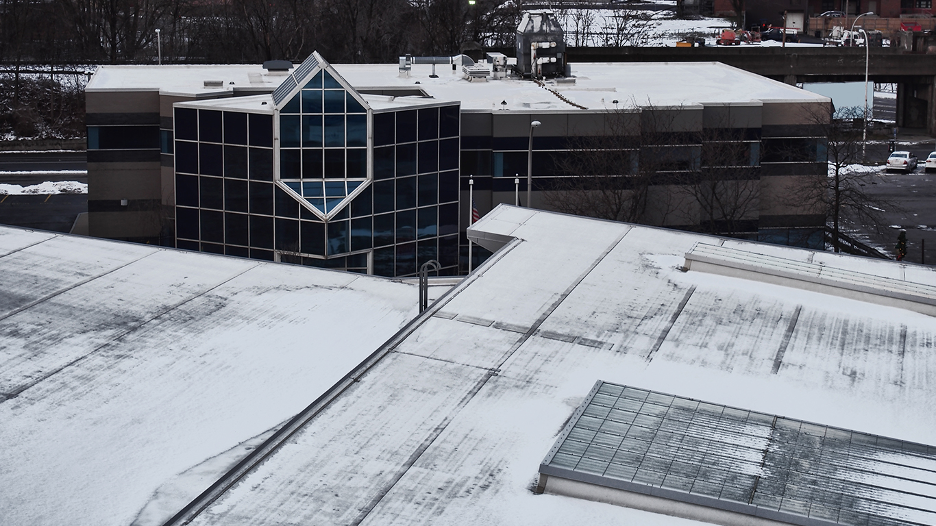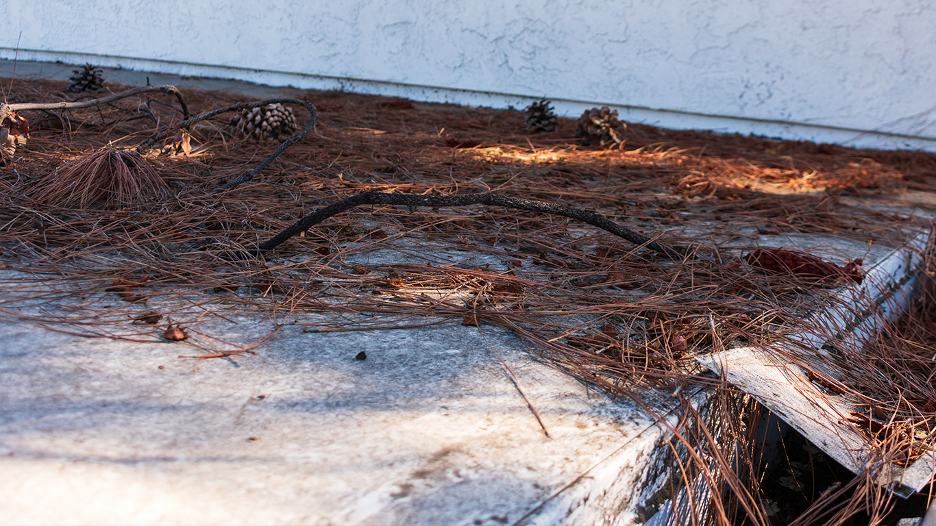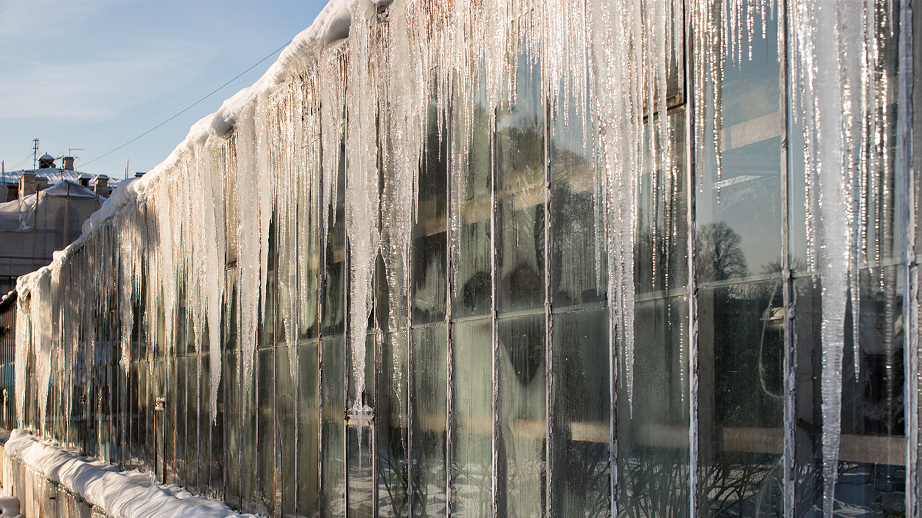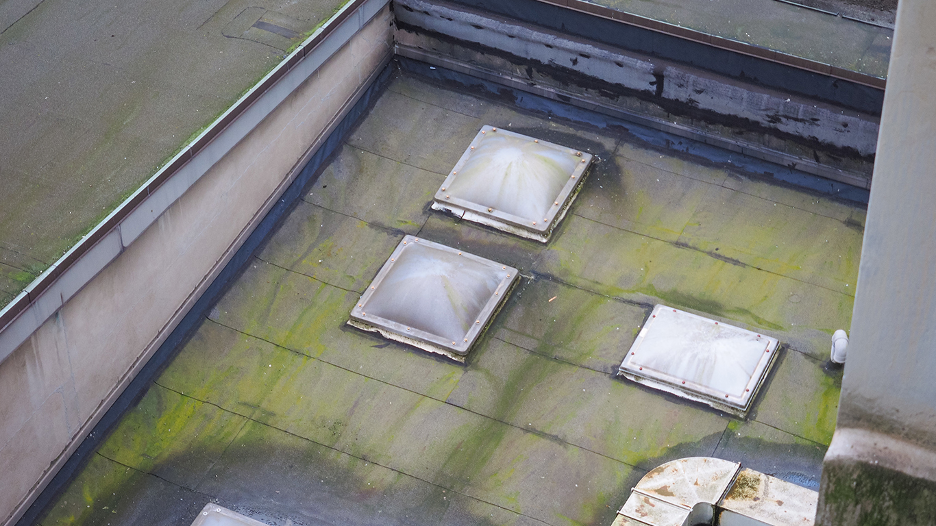
Winter can be harsh on a commercial flat roof if it is unprepared. Issues that develop in your roof over winter can impact the rest of your building. To protect your investment, you should have an experienced commercial roofing professional clean and inspect your roof in the fall, or at least before the snow arrives. In the fall you should gather stakeholders, make a snow removal plan and greenlight any repairs that your roof needs.
While you should hire a professional roofer for preparing your roof for winter, you and the other building stakeholders should still take the time to understand what steps a professional should take to protect your roof. You need to be able to assess quotes from professionals and to ask pertinent questions about your specific roof’s needs.
How do you make sure your roof was properly cleaned? What goes into a proper roof inspection? In this guide, we will answer your questions and explain every part of commercial roof winterization, so that you are prepared for your conversations with your roofer and are more informed about the steps that he or she should take to protect your roof.
- Clean Your Commercial Roof

Before your roof inspection, you should ask your roofing professional to also clean the rooftop. Removing debris will allow the professional to inspect every part of the roof. Further, cleaning the roof is an important step to prevent rotting, mold, moss, blocked drainage and other problems from developing on the roof through the winter and into the spring.
While they are cleaning, your roofing professional should also look out for signs of animal infestation. If animals are already familiar with your rooftop, they may attempt to take shelter from the cold in your roof and cause damage.
Also, nesting material, droppings, food scraps and other debris left behind by animals can become large problems for your roof throughout the year. These should be cleaned, and you should take steps to discourage animals from spending time on your rooftop.
Your roofer or an animal/pest removal expert can guide you as to how to prevent animals from spending time on the roof. Some steps they may suggest include:
- Remove nesting materials, unless the animal is protected by law.
- Close up gaps where animals may access the building through the roof.
- Remove sources of food or nesting materials, such as nuts or leaves, dropped from a nearby tree.
- Trim nearby trees that help squirrels and raccoons climb onto the roof.
- Fix ponding and slow drainage so animals do not have sources of water on the roof.
Though bird nests may be protected by law, there are legal ways to keep birds off commercial flat roofs.
While cleaning your roof, the roofing professional should also look out for signs of tree damage to the roof. Branches torn off from trees can damage roofing membranes. Trees that are too close to the building may be at risk of falling on it. They may also dump excess snow onto your roof. To avoid tree damage on your roof, you should have a professional remove or trim the trees on your property.
- Fall Commercial Roof Inspection
Fall is an excellent time of year to have your professional roofer complete your yearly inspection. Finding and fixing issues before winter will help ensure your roof’s problems don’t become more serious over winter. Small cracks in membranes or gaps in flashing can be further opened as melted snow refreezes and expands. Commercial drainage systems may also be at risk if water can refreeze in them. Finding problems before they cause more damage is a smart way to lower the overall cost of your roof maintenance.

The entire roof should be inspected, but key parts of a fall commercial roof inspection include:
- Downspouts and gutters should be free of debris and in good condition.
- Downspouts that drain internally should also be free of debris.
- Drainage points should be free of debris, especially leaf clutter.
- Seals and flashing around rooftop penetrations should be in good condition.
- Membranes should be free of punctures, dips and ponding.
- Roof ventilation should be free of debris.
All areas of the roof should be checked for deterioration, weakness and damage.
- Repair Your Roof Before Winter
Can a flat roof be repaired in winter? Yes. However, it is not ideal to leave repairs until then. There are many reasons that winter repairs are less than ideal, including:
- Winter repairs are more inconvenient for building users and occupants.
- Cold and snow make work more challenging in terms of safety for roofers.
- Many roofing products need to be kept warm before or during installation.
- Snow may hide hazards on the roof, which means roofers need to put down markers where skylights, equipment and other roof features are.

This additional work means that roofers may need to charge more to perform repairs during the winter.
Another good reason to get your roof repairs completed now is that winter can make any issues with your roof worse. For example, leaks can be made worse by melting snow on the roof. If that water refreezes, it can expand cracks in roofing membranes. It’s wise to fix dips or low points in the roof, which cause ponding, before melted snow gathers in them and makes the problem worse in spring. Any drainage problems will also be made worse in the spring. In short, the best time to fix a problem in the roof is when you find it.
- Create a Snow Removal Plan
If you’re in a cold climate, your commercial flat roof may need to have snow removed a few times throughout the winter. Snow buildup on the roof can cause several issues with the roof and the rest of the building. However, hasty and improper snow removal can cause damage to the roof membranes. It is best to consider when to remove snow from a flat roof beforehand and share your plans with your snow removal contractor.
Part of your snow plan may be to install features to protect the roof from snow, such as:
- Wind baffles: Drainage and ventilation systems may suffer from snow ingestion. If they take in snow, it may melt and refreeze, stressing pipes and potentially leaking into the building. Or snow may seal up air vents so that they no longer function. Therefore, wind baffles should be installed on these roof penetrations to prevent snow ingestion.

- Snow guards: While snow guards are more common on metal roofs, they may be used on a flat roof as well. Roof features that are subject to drifting snow carried by the wind may be effectively sheltered with snow guards.
Ask your roofer if he/she recommends that you install any snow protective features. If you do need these features, have them installed in the fall so that they will be functional all winter, even in the event of early snow.
Are You Ready to Winterize Your Roof?
Avoid preventable problems on your roof in the winter or spring by providing flat roof care in before winter, or beforehand. You can reach out to a professional roofer to get started through IKO’s Contractor Locator.

